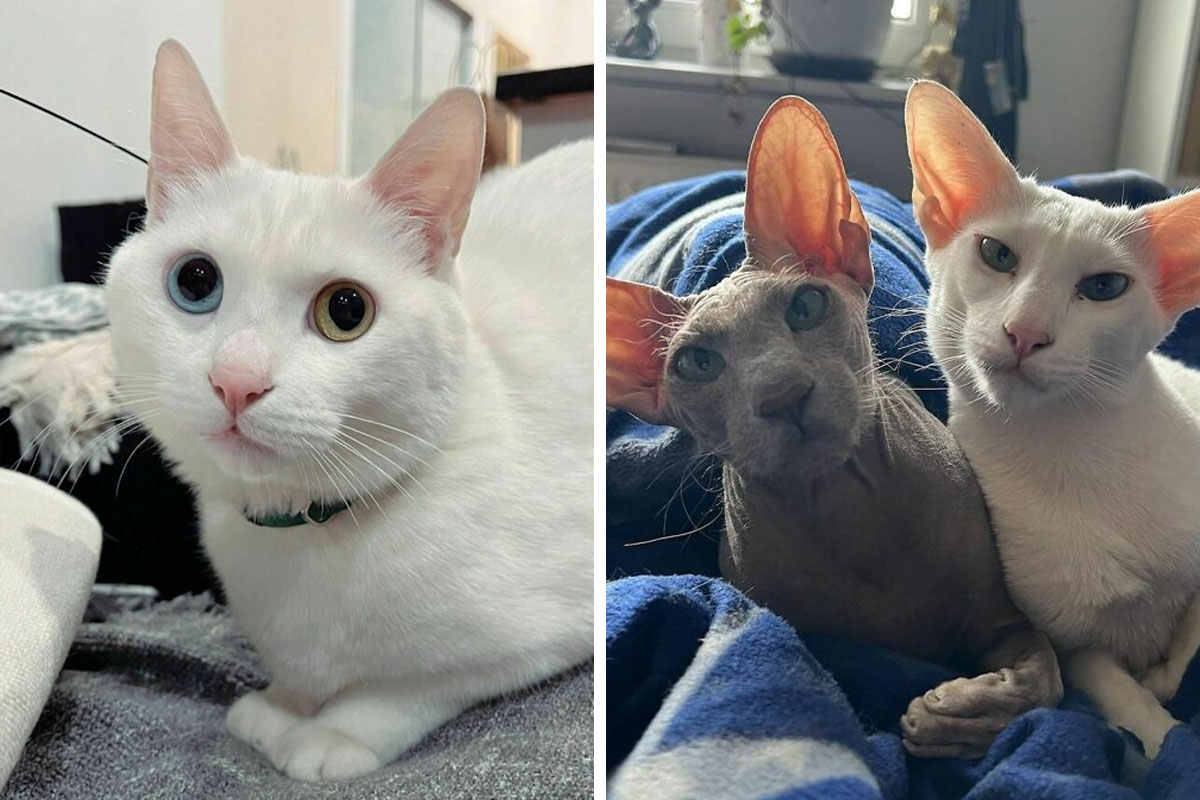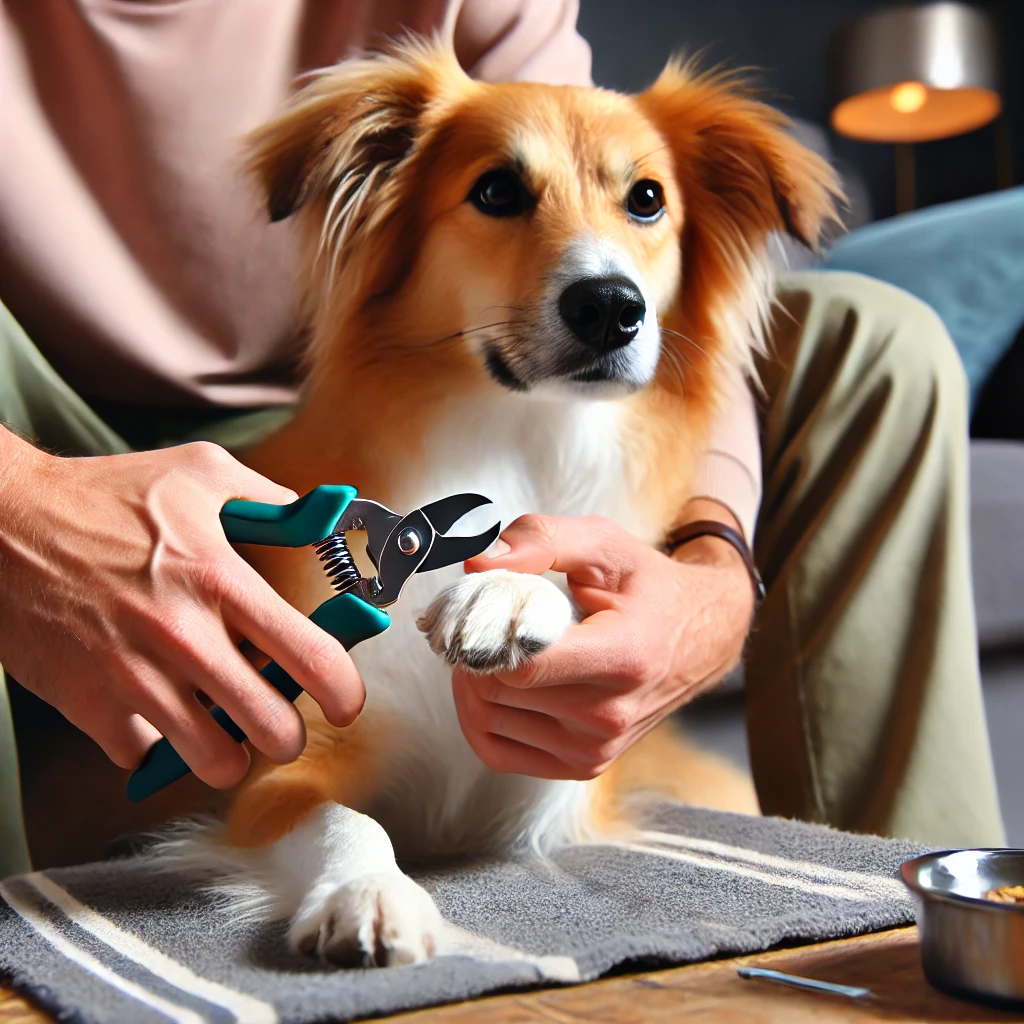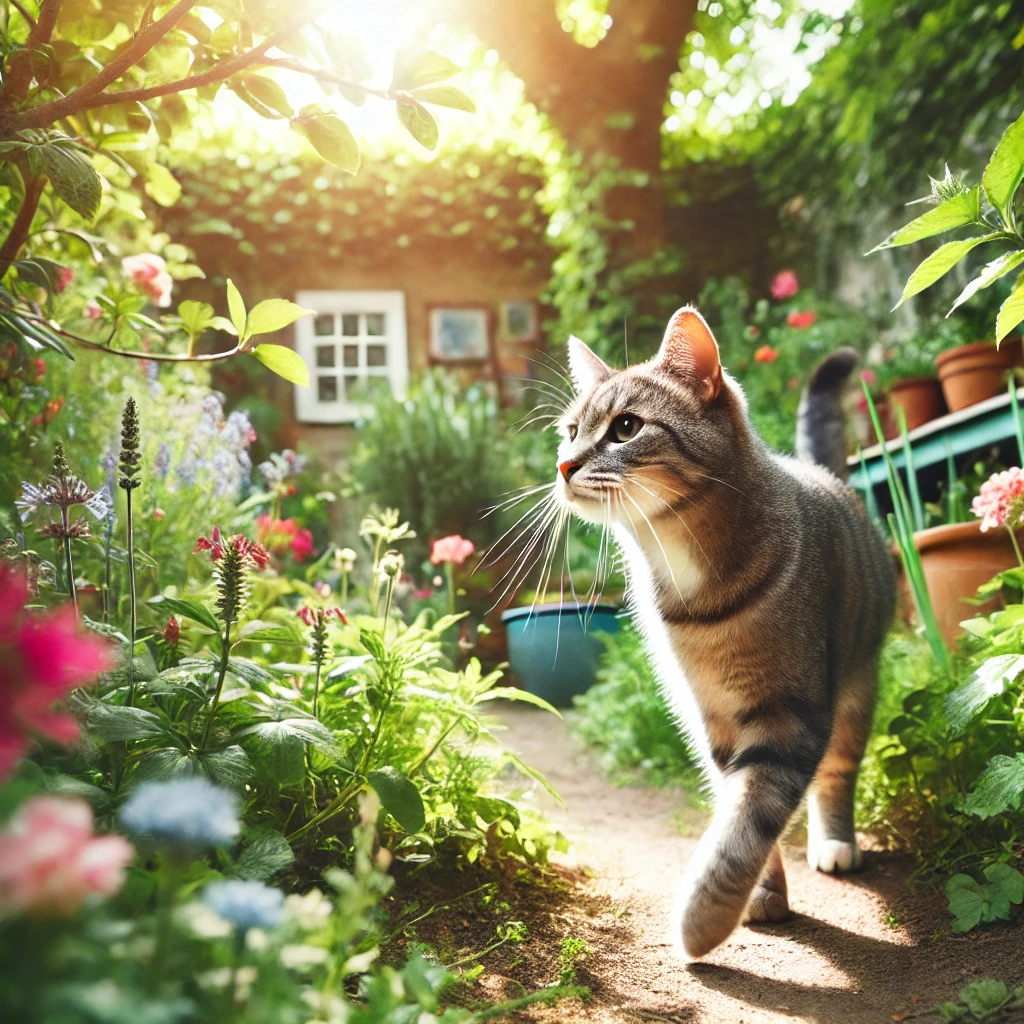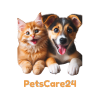Understanding cat breeds involves recognizing their unique characteristics and care requirements. Each breed has distinct traits and specific needs.
Cats come in a variety of breeds, each with its own unique personality, appearance, and care needs. From the playful Siamese to the laid-back Persian, cat breeds offer a range of choices for potential pet owners. Knowing the specific traits of each breed helps in choosing the right cat for your lifestyle.
Some breeds require more grooming, while others need more social interaction. Understanding these differences ensures you can provide the best care for your feline friend. This guide highlights some popular cat breeds, their characteristics, and what it takes to keep them happy and healthy.
Diverse World Of Cat Breeds
There are many cat breeds. Each breed has unique traits. From fluffy Persians to sleek Siamese, cats vary widely. Knowing their origins and care helps in choosing the right cat.
Origin Of Domestic Cats
Domestic cats descend from wild cats. Ancient Egypt played a big role. Cats were revered and protected there. They helped control pests and were companions. Trade spread cats globally. They adapted to different climates and cultures.
Evolution Of Cat Breeds
Over time, cats evolved to suit human needs. Selective breeding created diverse breeds. Each breed developed distinct features. Here are some popular breeds:
- Persian: Long fur, calm nature, needs regular grooming.
- Siamese: Sleek body, vocal, enjoys social interaction.
- Maine Coon: Large size, friendly, good with children.
- Sphynx: Hairless, needs warmth, frequent baths required.
Each breed has its care requirements. Knowing these helps in providing better care.
Cat Breed Comparison Table
| Breed | Characteristics | Care Requirements |
|---|---|---|
| Persian | Long fur, calm | Regular grooming |
| Siamese | Sleek, vocal | Social interaction |
| Maine Coon | Large, friendly | Good with children |
| Sphynx | Hairless, needs warmth | Frequent baths |

Credit: www.boredpanda.com
Characteristics Of Popular Breeds
Understanding the unique traits of different cat breeds can help you make informed decisions about pet ownership. Each breed has distinct physical traits and behavioral tendencies. Knowing these can enhance your pet care experience.
Physical Traits
Different cat breeds exhibit unique physical features. Here’s a look at some popular breeds:
| Breed | Size | Coat Type | Color Variations |
|---|---|---|---|
| Persian | Medium to Large | Long, Thick | White, Black, Blue, Cream |
| Siamese | Medium | Short, Fine | Seal, Blue, Chocolate, Lilac |
| Maine Coon | Large | Long, Shaggy | Brown, Tabby, Black, White |
| Sphynx | Medium | Hairless | Various Skin Colors |
Behavioral Tendencies
Each breed also has unique behavioral traits. Here’s what to expect:
- Persian: Calm, Affectionate, Enjoys Quiet.
- Siamese: Vocal, Social, Highly Active.
- Maine Coon: Friendly, Playful, Good with Kids.
- Sphynx: Curious, Energetic, Loves Attention.
Recognizing these traits can help you choose a cat that fits your lifestyle. Each breed has specific care needs, so research thoroughly before making a decision.
Rare And Exotic Breeds
Rare and exotic cat breeds have unique and fascinating features. These breeds often require special care and attention. They are not common, making them intriguing to cat enthusiasts. Let’s explore some of these rare and exotic cat breeds.
Unique Features
Each rare cat breed has distinctive traits. These traits make them stand out. Here are some examples:
| Breed | Unique Features |
|---|---|
| Savannah | Spotted coat, large ears, long legs |
| Bengal | Leopard-like spots, muscular build, sleek fur |
| Peterbald | Hairless body, almond-shaped eyes, large ears |
Conservation Status
Some rare breeds face challenges in maintaining their populations. Here are a few examples:
- Egyptian Mau: This breed is ancient and has a small population.
- American Bobtail: Rare due to selective breeding.
- Korat: Native to Thailand, limited breeding outside its origin.
Conserving these breeds is crucial. This helps maintain genetic diversity and their unique characteristics.
Hairless Wonders
Hairless cats are unique and captivating. Their smooth, bare skin sets them apart. These cats have distinct characteristics and require special care. Let’s dive into the world of hairless wonders.
Sphynx And Its Kin
The Sphynx is the most well-known hairless cat. They are friendly and affectionate. Sphynx cats love human attention. They often seek warmth and cuddles.
Other hairless breeds include the Bambino and the Peterbald. The Bambino is a mix of the Sphynx and Munchkin breeds. They have short legs and playful nature. The Peterbald comes from Russia. They have a sleek, elegant look.
| Breed | Characteristics | Personality |
|---|---|---|
| Sphynx | Hairless, wrinkled skin | Affectionate, social |
| Bambino | Short legs, hairless | Playful, friendly |
| Peterbald | Sleek, hairless | Elegant, active |
Special Grooming Needs
Hairless cats need regular baths. Their skin gets oily without fur. Use a gentle, cat-safe shampoo. Dry them well after each bath.
Check their ears weekly. Hairless cats can have wax buildup. Clean their ears with a vet-approved cleaner.
Protect them from the sun. Hairless cats can get sunburned. Use pet-safe sunscreen or keep them indoors.
Here is a checklist for grooming hairless cats:
- Regular baths with gentle shampoo
- Weekly ear cleaning
- Protection from sun exposure
- Moisturize skin if dry
Giant Felines
Giant felines are fascinating creatures with unique characteristics. They are known for their large size and gentle nature. These cats often weigh more than the average domestic cat. Their size requires special care and attention.
Maine Coons And Others
Maine Coons are one of the most popular giant cat breeds. They have tufted ears, bushy tails, and a friendly temperament. They are known as “gentle giants” because of their sweet nature. Maine Coons are very social and enjoy human interaction.
Other giant felines include Norwegian Forest Cats and Savannah Cats. Norwegian Forest Cats have thick fur and a muscular build. They are good climbers and love to explore. Savannah Cats are a hybrid breed, a mix of domestic cats and African Servals. They are active and playful, needing lots of stimulation.
| Breed | Characteristics | Special Care Requirements |
|---|---|---|
| Maine Coon | Large, friendly, social | Regular grooming, interactive play |
| Norwegian Forest Cat | Thick fur, muscular, explorer | Climbing spaces, fur maintenance |
| Savannah Cat | Hybrid, active, playful | High activity, mental stimulation |
Space And Exercise Requirements
Giant felines need more space than smaller cats. They love to climb and explore. Provide them with cat trees and scratching posts. This helps them stay active and healthy.
Interactive toys are essential for their mental stimulation. These cats enjoy puzzle toys and feather wands. A large living space or access to a safe outdoor area is ideal. This allows them to move freely and exercise regularly.
- Provide large cat trees
- Interactive toys for mental stimulation
- Safe outdoor access if possible
Regular exercise helps maintain their weight and prevents health issues. Giant felines need daily play sessions. This keeps them happy and healthy.

Credit: medium.com
Tiny Tigers
Cats come in all shapes and sizes, but some are small and mighty. These “Tiny Tigers” are breeds known for their petite stature and big personalities. Despite their small size, they are full of energy and require special care. Let’s dive into some of these fascinating breeds and what they need to stay happy and healthy.
Munchkin And Similar Breeds
The Munchkin cat is known for its short legs and playful nature. These cats are affectionate and love to play with toys and people. They have a medium coat that comes in various colors and patterns.
- Short legs
- Playful and affectionate
- Medium coat
Another tiny breed is the Singapura. This breed is one of the smallest cat breeds. Singapura cats are known for their large ears and big eyes. They are very active and love to climb and explore.
- Very small size
- Large ears and eyes
- Active and curious
The Devon Rex is another small breed with a unique appearance. These cats have large ears, curly fur, and a mischievous personality. They are very social and love to be around people.
- Curly fur
- Large ears
- Social and mischievous
Health Considerations
Small breeds like Munchkins and Singapuras have specific health needs. Regular vet check-ups are crucial to catch any health issues early.
| Breed | Common Health Issues | Care Tips |
|---|---|---|
| Munchkin | Spinal problems | Regular vet visits, healthy diet |
| Singapura | Kidney issues | Hydration, balanced diet |
| Devon Rex | Skin conditions | Regular grooming, vet checks |
These tiny cats need a balanced diet to stay healthy. High-quality cat food with the right nutrients is essential. They should also have plenty of fresh water available at all times.
Interactive toys and climbing structures help keep these active breeds entertained. Regular playtime can prevent boredom and reduce stress.
Feline Genetics
Feline genetics help us understand why cats look and behave differently. Each breed has unique traits. These traits are passed down through generations. Understanding feline genetics can help cat owners provide better care. Let’s dive into the fascinating world of cat genetics!
Coat Color And Patterns
Cat coat colors and patterns are determined by genes. These genes come in pairs. Each parent contributes one gene. The combination of these genes creates the cat’s unique coat.
Common coat colors include:
- Black
- White
- Gray
- Orange
Common coat patterns include:
- Tabby
- Tortoiseshell
- Calico
- Bicolor
Some breeds have specific color traits. For example, Siamese cats have a distinct color pattern. Their coat is lighter on the body and darker on the ears, face, paws, and tail.
Inherited Health Issues
Genetics also play a role in a cat’s health. Some breeds are prone to certain health issues. Knowing these can help you provide better care for your cat.
| Breed | Common Health Issues |
|---|---|
| Persian | Polycystic kidney disease |
| Maine Coon | Hip dysplasia |
| Sphynx | Heart disease |
| Scottish Fold | Joint issues |
Regular vet check-ups are essential. Early detection can make a big difference. Proper diet and exercise can also help manage these issues.
:strip_icc()/personalities-of-popular-cat-breeds-554219-hero-d47de86e0d374f80afa374f8b7309847.jpg)
Credit: www.thesprucepets.com
Breed-specific Care
Different cat breeds have unique needs. Understanding these needs ensures your cat’s health and happiness. Each breed has specific care requirements that cater to their distinct characteristics.
Nutritional Needs
Each cat breed requires a diet tailored to their specific needs. Proper nutrition helps maintain their health and well-being.
- Siamese Cats: High protein diet to support their active lifestyle.
- Persian Cats: Balanced diet with omega fatty acids for their long fur.
- Maine Coon Cats: Nutrient-rich food to support their large size.
Always consult with a vet for a personalized diet plan for your cat.
Mental And Physical Stimulation
Cats need both mental and physical activities to stay healthy and happy.
| Breed | Mental Stimulation | Physical Stimulation |
|---|---|---|
| Bengal | Puzzle toys and interactive games. | Daily play sessions and climbing structures. |
| Ragdoll | Gentle play and social interactions. | Moderate playtime and soft toys. |
| Sphynx | Interactive toys and companionship. | Active play and climbing opportunities. |
Engaging your cat in both mental and physical activities prevents boredom and promotes their overall well-being.
Choosing The Right Breed
Choosing the right cat breed is crucial for a happy home. Cats have different needs, temperaments, and care requirements. This guide will help you make an informed decision.
Lifestyle Compatibility
Your lifestyle plays a big role in choosing the right cat. Active breeds like the Bengal or Abyssinian need lots of playtime. They love climbing and exploring. They suit active families well.
If you have a calm lifestyle, consider a Persian or Ragdoll. These cats enjoy lounging and are low-energy. They prefer quiet homes.
Busy families should look at independent breeds. The American Shorthair or British Shorthair can handle being alone. They are low-maintenance and adaptable.
Allergies And Grooming
Allergies are a major factor in choosing a cat. Hypoallergenic breeds like the Siberian or Balinese are good options. They produce fewer allergens and are easier on sensitive noses.
Grooming needs vary by breed too. Long-haired breeds like the Maine Coon or Persian need daily brushing. They shed more and can get matted fur.
Short-haired breeds like the Siamese or Sphynx need less grooming. The Sphynx is hairless and needs regular baths. Short-haired breeds are easier to maintain.
| Breed | Energy Level | Grooming Needs |
|---|---|---|
| Bengal | High | Moderate |
| Persian | Low | High |
| American Shorthair | Moderate | Low |
| Siberian | Moderate | Moderate |
Choose a breed that fits your lifestyle and grooming abilities. This ensures a happy and healthy relationship with your new cat.
Responsible Breeding Practices
Responsible breeding practices ensure the health and well-being of cats. Breeders must follow guidelines to maintain healthy and happy cats. This includes health screening and ethical considerations.
Health Screening
Health screening is vital for responsible cat breeding. Breeders must test cats for genetic diseases. This helps in producing healthy kittens. Regular veterinary check-ups are also necessary.
Here are some common health tests:
- Feline Leukemia Virus (FeLV) Test: Ensures cats are free from this virus.
- Feline Immunodeficiency Virus (FIV) Test: Checks for immune system issues.
- Heart Health Evaluation: Prevents heart-related problems.
Ethical Considerations
Ethical considerations ensure the humane treatment of breeding cats. Breeders must provide proper living conditions. Cats should have clean, spacious, and comfortable habitats.
Important ethical practices include:
- Limiting Breeding Frequency: Avoid overbreeding to ensure cat health.
- Providing Socialization: Cats need interaction and playtime.
- Adopting Retired Cats: Find homes for cats no longer used for breeding.
Adoption And Rescue
Adopting a cat is an exciting journey. It provides a loving home to a furry friend in need. Understanding cat breeds can help you find the perfect match. This section delves into the adoption and rescue process. It highlights the importance of rescuing cats and how to find breed-specific rescues.
Finding Breed-specific Rescues
Many rescues focus on specific cat breeds. These rescues are experts in their chosen breed. They can offer valuable insights into the breed’s characteristics and care needs. Here are some tips to find breed-specific rescues:
- Online Search: Use search engines to find breed-specific rescues.
- Social Media: Join cat breed groups on platforms like Facebook.
- Vet Recommendations: Ask your local vet for recommendations.
Breed-specific rescues often have cats that need homes. They may also offer resources for new cat owners. This ensures a smooth transition for both the cat and the adopter.
Benefits Of Adoption
Adopting a cat has many benefits. It saves lives and offers a second chance to a deserving cat. Here are some key benefits:
- Saving Lives: Adopting from a rescue reduces the number of homeless cats.
- Health Checks: Rescues often provide health checks and vaccinations.
- Behavior Insights: Rescues can share behavior insights about the cat.
- Support System: Many rescues offer post-adoption support and advice.
Adopting a cat can bring joy to your home. It also teaches compassion and responsibility. Both the cat and the adopter benefit from this loving bond.
Frequently Asked Questions
Do Different Breeds Of Cats Have Different Traits?
Yes, different cat breeds have distinct traits. Some are playful, others are more independent. These traits vary widely.
What Are The Distinguishing Characteristics Of Cats?
Cats have sharp retractable claws, keen night vision, and excellent balance. They are agile, curious, and independent. Their purring often signifies contentment.
How To Classify Cat Breeds?
Classify cat breeds by size, coat type, color, and personality traits. Consider pedigree status and origin. Use breed standards from cat associations.
What Breed Of Cat Has The Best Personality?
The Maine Coon breed is known for its friendly and sociable personality. They are gentle, playful, and great with families.
Conclusion
Exploring cat breeds helps you find the perfect feline companion. Each breed has unique traits and care needs. Understanding these can ensure a happy, healthy pet. Choose wisely and enjoy the rewarding experience of cat ownership. Your knowledge of breeds will enhance your bond with your furry friend.



